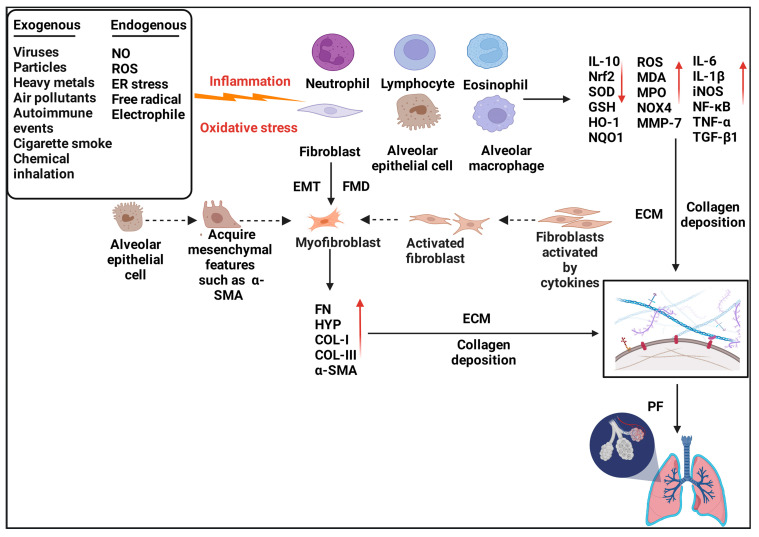Figure 1.
Pathogenesis of pulmonary fibrosis. Various exogenous and endogenous factors, such as autoimmune diseases, viral infections, cigarette smoke, inhalation of toxic substances, and free radicals, can lead to damage to the alveolar epithelial cells (AECs), aberrant activation of immune cells (neutrophils, alveolar macrophages, lymphocytes, and eosinophils), and fibroblasts. These lung cells secrete multiple pro-inflammatory and pro-fibrotic factors which can accelerate the EMT process, induce the transition of AECs to lung fibroblasts, trigger the activation of quiescent fibroblasts, and promote the differentiation of fibroblasts to myofibroblasts. Myofibroblasts can further release a large amount of collagen and ECM, resulting in hyperproliferation of fibroblasts and accelerates the progression of pulmonary fibrosis.

